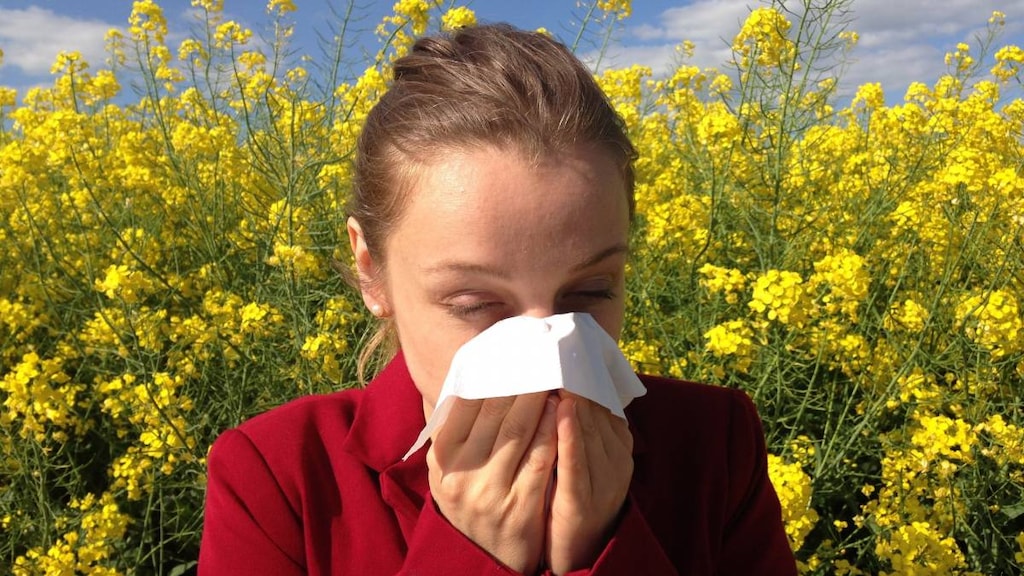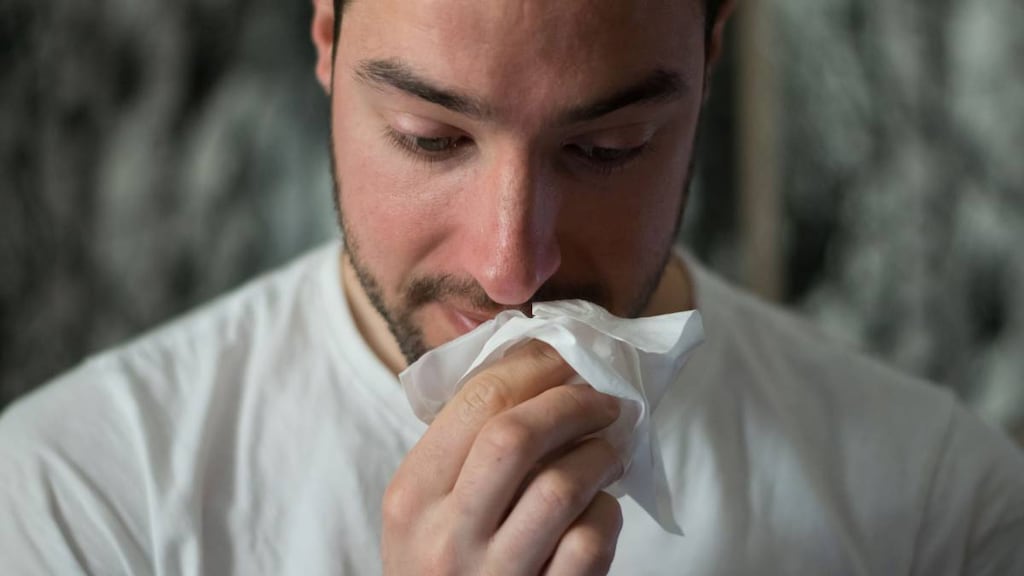Allergy Medications 101: Types, Usage and Alternatives

If you have allergies, chances are that you rely on medications, along with lifestyle steps, to manage your condition. Because most allergies can't be cured, treatments are aimed at easing symptoms. Whether by prescription or over the counter, you have many options for finding relief.
Allergies in a nutshell
Allergies happen when your immune system mistakenly reacts to substances you come into contact with in everyday life, such as pollen and grasses, dust mites, pet dander and certain common foods. Thinking that these substances are harmful, your immune system battles them by producing antibodies, explains the Mayo Clinic. This reaction to the so-called allergens leads to inflammation that can affect your skin, sinuses, airways and even your digestive system.
Allergic reactions range from mild and annoying to the life-threatening anaphylaxis, when your throat and other airways can swell to the point where you can’t breathe, according to the Nemours Foundation.
Many allergens cause similar symptoms, yet there can be many variations.
Here’s what you might experience from various allergens:
- Pollen: sneezing; itchy, runny or stuffed nose; itchy, watery, red or swollen eyes.
- Foods: tingling inside your mouth; swollen lips, tongue or throat; hives. Most-common food allergens are eggs, fish and shellfish, milk, peanuts and tree nuts, soy and wheat.
- Insect venom: swelling around the sting or bite; itching; widespread hives; chest tightness; coughing, wheezing or feeling short of breath.
- Medications: itchy skin rash; hives; swelling around the face; wheezing.
- Substances causing skin reactions, like latex: itchy, red, flaky skin (eczema).
Food allergies, insect venom, latex allergies as well as allergies to medications are the most common ones that can be severe enough to lead to anaphylaxis. In addition to severe swelling of the throat, anaphylaxis symptoms can include losing consciousness, a drop in blood pressure, severe shortness of breath, lightheadedness, a rapid and weak pulse, nausea and vomiting. Without fast treatment, you can go into shock and die, according to the Mayo Clinic.
Common allergy medications
When it comes to symptom relief, antihistamines and decongestants are the main types of allergy medications in your arsenal, according to the Cleveland Clinic. These drugs come in various formulas, some available over-the-counter and others by prescription. People often benefit most by using both types of medications to manage allergies.
- Antihistamines
When you’re exposed to an allergen, your immune system fights back by producing a chemical called histamine. The problem is the chain reaction that histamine causes. Say that you inhale pollen, causing the release of histamine from mast cells in your nose and sinus membranes. That histamine is what causes the typical allergic reaction of redness, swelling and itching as it attaches to nearby areas, called receptors. Antihistamines are drugs that block this reaction and are often the go-to medication for symptom relief. They can shut down all that sneezing and the itchy, runny nose. Some products may even break up congestion. Antihistamines also relieve the hives you might get from allergens like bee venom or a food allergen, according to the National Library of Medicine.
Keep in mind that traditional antihistamines can make you sleepy, and their labels will warn against driving or using heavy machinery while you’re taking them, according to the Cleveland Clinic. Look for the words “non-drowsy formula” for daytime use so that taking the medication won’t interfere with driving, work or chores. If you need to take a prescription medication, ask your doctor if there are both daytime and nighttime formulas of the drug.
Antihistamines come in many forms, from pills you can swallow or chew to liquids to nasal sprays. There are also drops to relieve red, itchy eyes. Read label directions carefully because some are to be taken every 4 to 6 hours while for others it’s every 12 hours or just once a day.
Common antihistamines include diphenhydramine and chlorpheniramine and newer non-drowsy formulas cetirizine (Zyrtec Allergy), fexofenadine (Allegra Allergy), levocetirizine (Xyzal) and loratadine (Claritin). Azelastine (Astelin, Astepro) and olopatadine (Patanase) are two nasal sprays. Eye drops formulas include azelastine (Optivar), emedastine (Emadine) and pheniramine (Visine-A, Opcon-A).
Possible side effects to be aware of when taking oral antihistamines include a change in mood, such as irritability or nervousness, loss of appetite, blurry vision, dizziness and a dry mouth. If you have high blood pressure, heart disease, glaucoma, diabetes, epilepsy or hyperthyroidism, ask your doctor about any precautions you might need to take before using any antihistamine, even an over-the-counter one, warns the National Library of Medicine.
- Decongestants
Another type of reaction to the presence of an allergen, like pollen, is swelling in your nose, along with excess fluid and mucus and congestion, states the Cleveland Clinic. Decongestants are designed to tamp down these symptoms by easing the swelling and drying up nasal passages. Decongestants are available in pill, liquid and spray forms. While a pill may take longer to work than a spray, using sprays too often — even for just three days in a row — can actually worsen your symptoms, warns the Mayo Clinic.
Common decongestants include pseudoephedrine (Sudafed), oxymetazoline (Afrin, Dristan) and tetrahydrozoline (Tyzine).
Possible side effects to be aware of when taking oral decongestants include irritability, headaches and insomnia, according to the Mayo Clinic. Because they can also raise blood pressure, you should avoid them if you already have high blood pressure or if you have heart disease, hyperthyroidism or glaucoma or are pregnant.
- Antihistamines + decongestants
Some allergy medication contains both an antihistamine and a decongestant to combat symptoms on all fronts. Many are available in over-the-counter formulas. Some cause drowsiness, while others don’t, so it’s important to read labels.
Common combination allergy medications are cetirizine and pseudoephedrine (Zyrtec-D), desloratadine and pseudoephedrine (Clarinex-D), fexofenadine and pseudoephedrine (Allegra-D) and loratadine and pseudoephedrine (Claritin-D).
Other medication options
According to the Mayo Clinic, there are a few other classes of medications that may help in certain situations.
- Corticosteroids
These drugs reduce inflammation and help shut down allergy symptoms. The best known formulas for allergy relief are nose sprays such as mometasone (Nasonex) and fluticasone (Flonase Allergy Relief). Corticosteroids are also available as inhalers, pills, liquids and eye drops, many by prescription only.
Long-term use of corticosteroids can cause side effects, including glaucoma from the eye drops and osteoporosis and worsening high blood pressure from pills. These drugs should only be used after talking to your doctor.
- Leukotriene inhibitors
These drugs target another chemical involved in the body’s response to allergens. Montelukast (Singulair) in particular targets hay fever.
- Mast cell stabilizers
These drugs shut down the mast cells involved in allergic reactions and may help when antihistamines don’t. They're available as an over-the-counter nasal spray (cromolyn) and as prescription eye drops, including cromolyn (Crolom) and perimolast (Amalast).
For severe allergic reactions
If you have life-threatening allergies, chances are that your doctor has prescribed epinephrine for you. It’s the life-saving treatment for anaphylaxis, the most severe allergic reaction and a true medical emergency. Epinephrine keeps your airways from swelling to the point where you wouldn’t be able to breathe. Whether you’re giving it to yourself or injecting it for a loved one, the easiest way to administer epinephrine is with an auto-injection pen.
Adults and children at risk for an anaphylactic reaction from food, an insect sting or other allergens should have an epinephrine auto-injector with them at all times. While it’s not complicated to inject into the side of the thigh, it’s important to have your doctor (or your child’s doctor) show you how it’s done and to get a “refresher course” yearly, according to the American Academy of Pediatrics. It is also important to make sure your epinephrine is not expired.
Epinephrine opens airways nearly immediately, but you must still call 911 for monitoring and possibly further treatment. Save the auto-injector and hand it to the emergency technician who arrives on the scene.
Brands of epinephrine auto-injections include Adrenaclick, Auvi-Q, Mylan EpiPen and Mylan generic.
Special medication concerns for children
Many children suffer from allergies, both year-round ones, like pet dander and dust mites, and the seasonal variety, like hay fever, which affects up to 40 percent of kids in the United States, according to the Food and Drug Administration (FDA). Also of concern is that allergies can set the stage for asthma, so it’s important to get them under control with the help of your child’s doctor through prescribed medications and limiting youngsters’ exposure to allergy triggers. Working out an age-appropriate medicine regimen with the doctor is key because children can have different reactions to medications than adults, and these reactions can be different from child to child based on their age.
Because children are more sensitive than adults to many drugs, some antihistamines that don’t bother mom or dad can have side effects even at the lower doses a child would take, like excitability or excessive drowsiness. The National Library of Medicine suggests making sure that the effects of an antihistamine don’t get in the way of learning at school.
Immunotherapy
What can you do when allergy medicines don’t work? When they’re just not as effective as you’d like or if you want to try to rid yourself or your child of a serious allergy, you might want to consider immunotherapy. This is a treatment that changes your immune system’s reaction to allergens. One option involves shots that desensitize you to the allergen over time. It’s an option for allergic rhinitis, allergic asthma and bee sting and fire ant allergies.
A newer alternative immunotherapy involves taking pills that are placed under the tongue to dissolve, called sublingual immunotherapy (SLIT), according to the American Academy of Allergy, Asthma and Immunology. The treatment is daily and starts before allergy season begins and continues throughout the season.
Three SLIT medications have been developed so far that target common pollens related to types of grasses. Two of them have been approved for kids. The medications are Ragwitek for ragweed, Oralair for sweet vernal, orchard, perennial rye, Timothy and Kentucky blue grass (for ages 10 to 65), and Grastek for Timothy grass (for ages 5 to 65).
A daily, year-round pill, Odactra, aimed at preventing reactions to dust mites, is also available, but for adults only.
The goal with immunotherapy is that, after three to five years, you will become immune to the allergen, reports the American College of Allergy, Asthma and Immunology.
Allergy medication alternatives
There is not a lot of evidence for effective alternatives to allergy medications, but some people have found relief with acupuncture, according to a 2015 study published in the Annals of Allergy, Asthma & Immunology. A four-week course reduced itching and sneezing and boosted quality of life, which often suffers when allergies are severe.
One home remedy that may help is using a saline solution or a neti pot to flush nasal passages, according to the National Center for Complementary and Integrative Health. Only use sterile bottled or filtered water, not tap water, and carefully wash the vessel after every use to discourage bacteria. Taking probiotics (they’re the good bacteria in yogurt) also may help, but it’s hard to say which brands are best because of limited research. Other options are to wear a mask over your nose and mouth when going outdoors on high pollen days and changing your clothes and showering as soon as you get home.
Article references
- Cleveland Clinic, Allergy Medications https://my.clevelandclinic.org/health/drugs/8612-allergy-medications
- Mayo Clinic, Allergies, Symptoms and Causes https://www.mayoclinic.org/diseases-conditions/allergies/symptoms-causes/syc-20351497
- Food and Drug Administration, Allergy Relief for Your Child https://www.fda.gov/consumers/consumer-updates/allergy-relief-your-child
- American Academy of Pediatricians, How to use an epinephrine auto-injector https://www.healthychildren.org/English/health-issues/injuries-emergencies/Pages/How-to-Use-an-Epinephrine-Auto-Injector.aspx
- National Library of Medicine, Antihistamines for Allergies https://medlineplus.gov/ency/patientinstructions/000549.htm
- Mayo Clinic, Allergy Medications: Know Your Options https://www.mayoclinic.org/diseases-conditions/allergies/in-depth/allergy- medications/art-20047403
- Nemours, What Is Anaphylaxis? https://kidshealth.org/en/teens/anaphylaxis.html
- American Academy of Allergy, Asthma & Immunology, AAAAI Allergy and Asthma Medication Guide https://www.aaaai.org/conditions-and-treatments/drug-guide/sublingual-immunotherapy-slit-tablet
- American College of Allergy, Asthma & Immunology, Sublingual Immunotherapy https://acaai.org/allergies/allergy-treatment/allergy-immunotherapy/sublingual-immunotherapy-slit
- Food and Drug Administration, Grastek https://www.fda.gov/vaccines-blood-biologics/allergenics/grastek
- Annals of Allergy, Asthma & Immunology: Acupuncture for seasonal allergic rhinitis: a randomized controlled trial (2015) https://www.sciencedirect.com/science/article/abs/pii/S1081120615003427
- The Journal of Allergy and Clinical Immunology: In Practice, Complementary and Alternative Medicine in Allergy-Immunology: More Information is Needed (2018) https://www.jaci-inpractice.org/article/S2213-2198(17)30750-X/pdf
- National Center for Complementary and Integrative Health, 6 Things To Know About Complementary Health Approaches for Seasonal Allergy Relief https://nccih.nih.gov/health/tips/allergies





